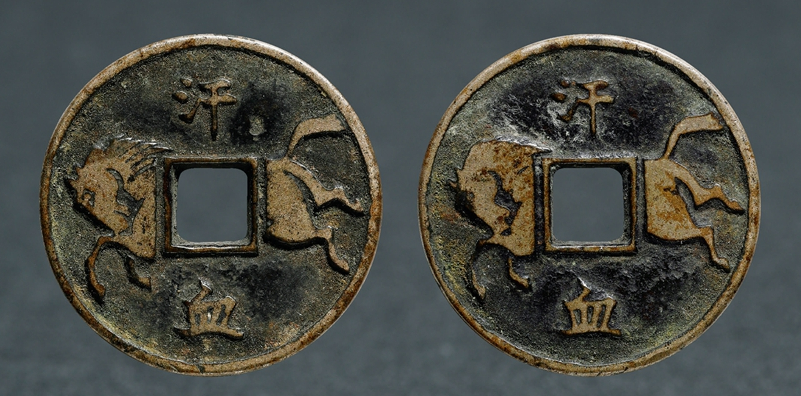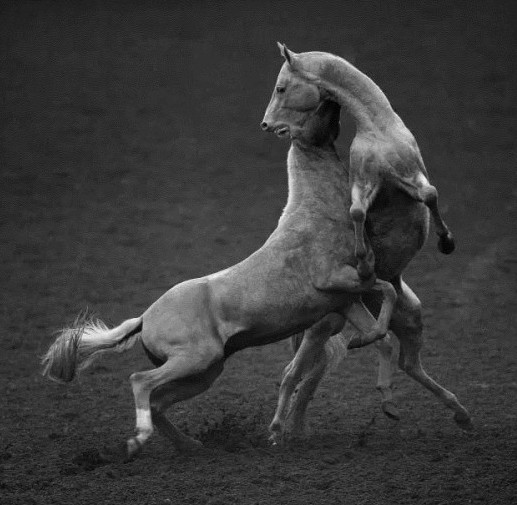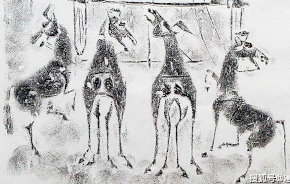“Horse coins” have been mentioned in Chinese literature for centuries but it is still unclear exactly how they were used. It is believed, however, that beginning in the Song dynasty (960-1279 AD) they were used as either game (打马格钱) or gambling (打马博戏) pieces.
Most pieces commemorate a famous horse from ancient Chinese history. Some of these I have already discussed in an article entitled “Horse Coins“.
I recently came across a particularly interesting piece which does not depict a specific historical horse but rather a breed of horses which first appeared in records dating back to Emperor Wu (汉武帝 157-87 BC) of the Han dynasty.

The sweating blood horse coin shown above was cast during the Song dynasty and is unique in that it is the only known specimen of its kind to be the same on both the obverse and reverse sides. The coin was previously in the collection of Mr. Wei Yutian (卫玉田 1854-1937) and was sold at auction in 2017.
The coin displays the image of a horse with two Chinese characters (han xie 汗血) meaning “sweats blood”. “Sweating blood” refers to a horse breed (han xie bao ma 汗血宝马) found in central Asia . These horses, also known as Akhal-Teke or Ferghana, are famous for their speed and endurance. They also have one unusual characteristic in that their skin can bleed when ridden hard.
Shown at the left is a photo from a Chinese website showing two of these blood-sweating horses in a fight. The caption reads:
战斗中的汗血宝马在互相撕咬,大声咆哮,充斥着浓烈的雄性荷尔蒙的味道。
This translates as:
“In the midst of battle, the sweating-blood horses bite each other, roaring loudly, and having the strong smell of male hormones.“
According to legend, these horses were a hybrid of a horse and a dragon. If they stepped on a stone, the stone would be crushed into powder.
Ancient literary works describe these horses as able to travel 1,000 li (里) during the day and 800 li at night while ordinary horses were only able to travel 150-200 li a day. (During the Han dynasty, a li was equal to about 0.25 mile (416 meters) so a distance of 1,000 li was equivalent to about 250 miles.)
As mentioned above, Emperor Wu of the Han dynasty had heard stories of these horses, which he referred to as tian ma (天马) or “heavenly horses”, and wanted them for his cavalry to be used in battles with the Xiongnu (匈奴), a nomadic people who occupied what is now Mongolia from the 3rd century BC to the late 1st century AD .
Emperor Wu tried to obtain the horses through diplomatic means from the Dayuan (大宛) who lived in the Fergana valley (present day Uzbekistan) in Central Asia. Unable to obtain the number of heavenly horses desired, he sent an army (War of the Heavenly Horses 天马之战; Han-Dayuan War 汉宛战争), defeating the Dayuan in 100 BC and obtaining 3,000 of the prized horses.
Emperor Wu’s mausoleum contains 80 skeletons of what may be these blood-sweating “heavenly horses”.
The ancients did not have a good explanation as to why the skin of these horses bleed. Today, scientists can offer two explanations.
One reason may be due to these horses having blood vessels clearly defined through their thin, almost transparent, skin. Small subcutaneous blood vessels may burst during a long and hard gallop.
These horses also have strong sweat glands in their shoulders and neck. Heavy sweating can make their coat look darker and give the illusion of bleeding.
The second explanation is that the horses were likely infested with skin parasites. Parafilaria multipapillosa is a parasitic nematode widely distributed across the Russian steppes. This parasite burrows into the subcutaneous tissues of horses resulting in skin nodules which often bleed copiously. Veterinarians call this “summer bleeding”.
While there are many varieties of horse coins, they can be categorized into three basic types. The first type has the picture of the horse on one side of the coin and the inscription identifying the horse on the other side. The second type has both the picture and the inscription on one side and the reverse side is blank. The third, and rarest, type has the identical picture with inscription on both sides (合背钱).
As already mentioned, this horse coin is of the rare third type and is also the only specimen know to exist.
This horse coin is 31mm (1.2 inches) in diameter and was sold at the Xiling Yinshe Auction Co., Ltd. (西泠印社拍卖有限公司) 2017 Spring Auction for $1,580 (10,350 RMB).
For those interested in additional information on horse coins, please see Horse Coins, “Battle of Jimo” Horse Coin, and Horse in Armour Horse Coins.

